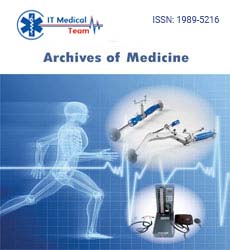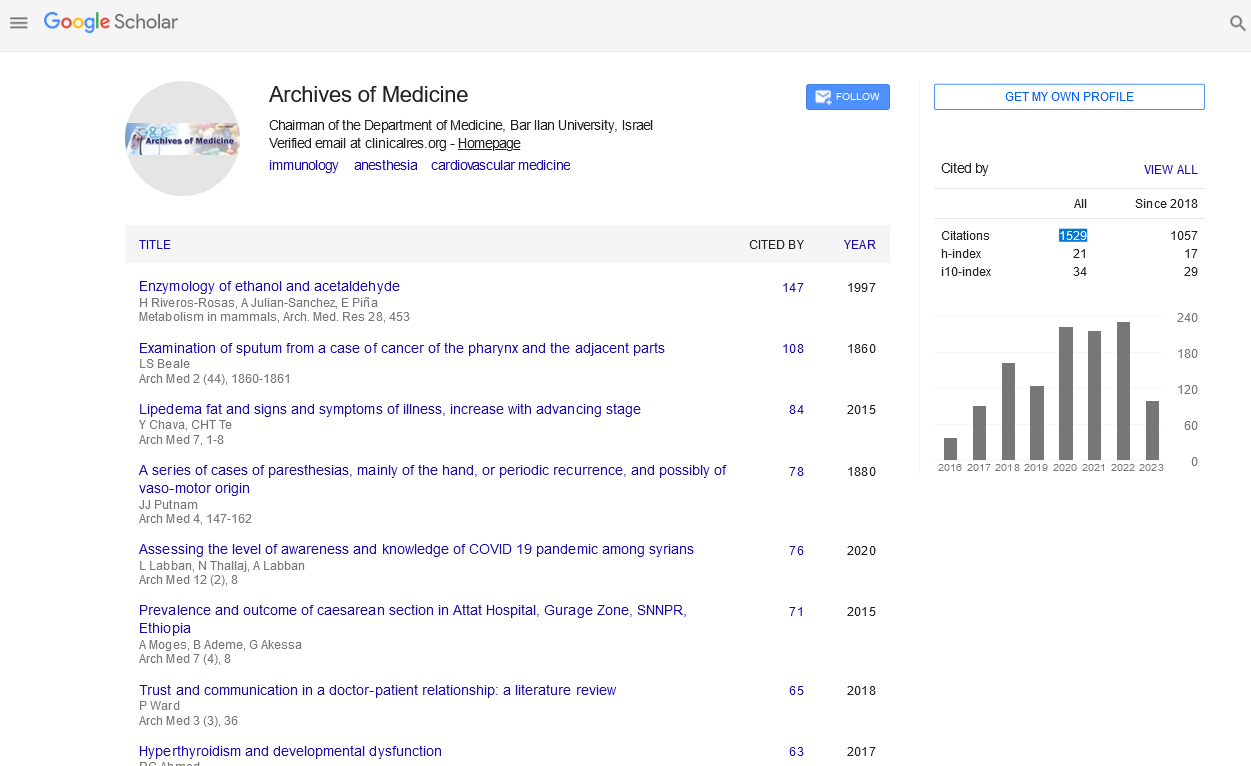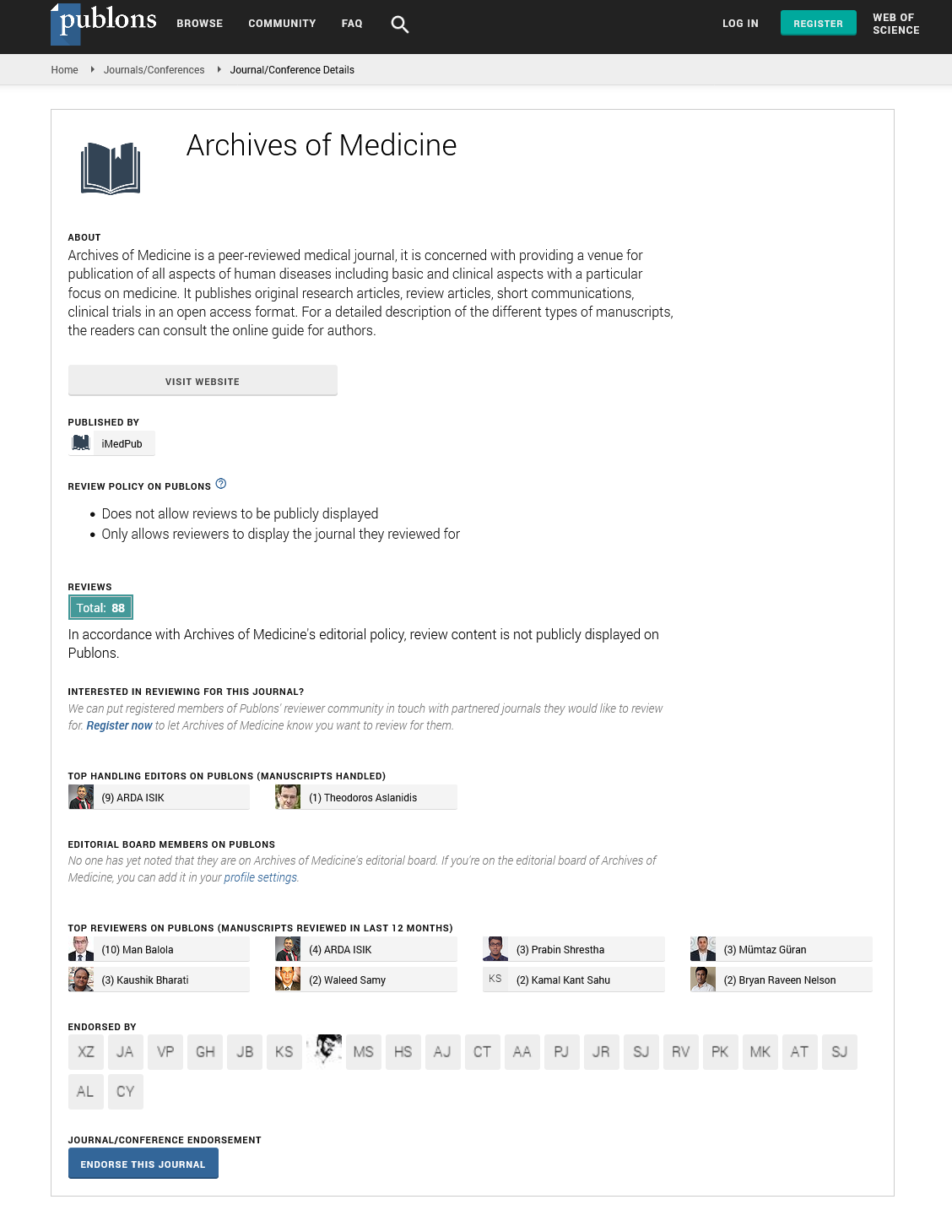Mini Review - (2022) Volume 14, Issue 12
Children with acute brain injury undergoing multimodal neurologic monitoring
Glenn Azouvi*
Department of Pediatrics, University of Pittsburgh School of Medicine, Pittsburgh, USA
*Correspondence:
Glenn Azouvi, Department of Pediatrics, University of Pittsburgh School of Medicine, Pittsburgh,
USA,
Email:
Received: 01-Dec-2022, Manuscript No. ipaom-22-13364;
Editor assigned: 03-Dec-2022, Pre QC No. P-13364;
Reviewed: 15-Dec-2022, QC No. Q-13364;
Revised: 20-Dec-2022, Manuscript No. R-13364;
Published:
27-Dec-2022
Abstract
Acute neurologic illness has a high mortality and neurologic disability
risk for children. Cerebral hypoxia, hypoperfusion, and edema
frequently exacerbate severe traumatic brain injury, cardiac arrest,
stroke, and central nervous system infection, resulting in additional
neurologic damage and worse outcomes. The management of
these conditions places an emphasis on close physiologic monitoring
and supportive care due to the lack of targeted neuroprotective
therapies. In this review, we will focus on the physiologic concepts
behind each tool and discuss advanced neurologic monitoring
strategies for pediatric acute neurologic illness. New monitoring
methods and the use of neurologic monitoring in critically ill patients
at risk of neurologic sequelae will also be highlighted in this article.
Keywords
Intracranial pressure; Cerebral autoregulation; Traumatic
brain injury; Hypoxic-ischemic; Brain injury.
Introduction
Children with acute neurologic illness have a high
mortality and morbidity rate. Over half of children
with normal baseline neurological function who suffer
an acute neurologic insult develop adverse neurologic
outcomes. Neuroprotective strategies address the causes
of "secondary" brain injury (such as cerebral edema
and ischemia) because there are few targeted therapies.
Maintaining cerebral perfusion and oxygenation while
anticipating and addressing pathologic increases in
intracranial pressure (ICP) are key components of critical
care for children with acute neurological injuries. Based on
physiologic principles, such as intracranial compliance and
cerebral autoregulation, these children require extensive
monitoring [1,2].
Description
Due to the limited neurologic examination,
prognostication of outcome presents a significant challenge
in pediatric critical care. Pharmacologic agents (such
as sedatives and neuromuscular blockades), metabolic
abnormalities, and the child's developmental stage, for
instance, can muddle the examination after cardiac arrest.
Poor outcomes have been linked in small pediatric studies
to the absence of motor response, a Glasgow Coma
Scale (GCS) score below 5, the absence of spontaneous
respiratory effort, and nonreactive pupils 24 hours after
return of circulation. Neurologic monitoring technologies
have emerged to provide multimodal pathophysiology
assessment, direct intervention, and enhance prognosis in
light of the limitations of physical examination [3].
The current indications, modalities, and approaches
for neurologic monitoring in critically ill children will
be discussed in this review. The topics of traumatic brain
injury (TBI), cardiac arrest, stroke, central nervous system
(CNS) infection, and critical illness that increases the
likelihood of brain dysfunction will be the primary focus
of this discussion. Multimodal monitoring, computed
physiologic indices, and noninvasive methods, among
others, will be highlighted in recent research [4].
In critical care, electroencephalography (EEG) is a
key component of neuromonitoring. Up to one third of
EEG-monitored children have seizures following moderate
or severe TBI, and forty percent only have nonmotor,
electrographic seizures. Posttraumatic symptomatic epilepsy,
which can result in long-term cognitive dysfunction, affects
one in five critically ill children with TBI. Neurovascular coupling, the imbalance between blood flow and neuronal
metabolic demands that causes seizures, is linked to a
metabolic crisis in brain tissue and may increase the risk
of secondary brain injury. Epilepsy prevention for seven
days with phenytoin or levetiracetam is emphasized in the
current TBI guidelines. The suppression of bursts during
barbiturate therapy for refractory intracranial hypertension
can be monitored using EEG. In a small number of pediatric
patients with severe TBI who required additional invasive
neuromonitoring, intracranial EEG has also been used.
This method has the potential to improve the detection of
secondary neurologic insults if it is further validated [5,6].
The term "quantitative EEG" (QEEG) refers to a
variety of electrographic features derived computationally
from EEG. These features include the calculation of peak
envelopes, amplitude-integrated EEG, quantification of
waveform frequencies using Fourier and wavelet analysis,
and determination of suppression ratios. QEEG has been
shown to be useful for prognosis in adult TBI. Vespa and
co. found that a poor outcome or death was predicted by a
lower alpha variability [7].
EEG has been used in addition to clinical examination
for monitoring and prognosis following cardiac arrest due
to the limitations of clinical examination. After cardiac
arrest, nearly half of children experience electrographic
seizures, which are linked to worse outcomes. The use of
EEG in prognostication is also supported by new evidence.
Positive neurologic outcomes are associated with normal
background EEG activity. There is a negative correlation
between abnormal findings like burst suppression and
the outcome. Children's outcomes after cardiac arrest
have been predicted by models with multiple EEG
features. The growing use of QEEG might make objective
neuromonitoring and prediction of outcomes better. A
model with QEEG features and an area under receiveroperator
characteristic curve of 0.88 was highly predictive
of outcome after cardiac arrest in a prospective observational
study of 87 children. A recent case series demonstrates that
asymmetric QEEG findings may occur prior to clinically
apparent severe neurologic decompensation. Neonatal
hypoxic-ischemic encephalopathy can be diagnosed with
amplitude-integrated EEG, which displays peak-to-peak
amplitude in a semilogarithmic manner. Amplitudeintegrated
electroencephalography (EEG) was recently
used to detect seizures and predict the outcome of pediatric
cardiac arrest. In a small prospective study of children
with nontraumatic disturbance of consciousness, a model
incorporating amplitude-integrated EEG was highly
predictive of neurologic outcome. In circumstances where
standard continuous EEG is impractical due to limited
resources, this method may be especially useful [8,9].
One in five children who suffer an acute stroke
experience seizures. As a result, children with stroke, seizure,
or altered mental status typically undergo an EEG. QEEG
might be more useful. Characteristic QEEG patterns were
observed in injured and uninjured brain regions in a recent
study involving 11 children who had either an ischemic or
hemorrhagic anterior circulation stroke. The spectral power
of those who had a stroke caused by hemorrhage varied
with arterial blood pressure. These intriguing preliminary
findings may lead to improved physiologic monitoring of
the stroke penumbra if validated in larger studies.
Current guidelines recommend EEG monitoring for
patients receiving ECMO support and those requiring
pharmacologic neuromuscular blockade while at risk of
seizures because seizures are linked to higher mortality
rates. In two single-center retrospective studies, an EEG
was used to monitor roughly half of pediatric ECMO
patients. Between 16% and 22% of people experienced
electrographic seizures, which were linked to death and
intracranial hemorrhage. Patients who are critically ill and
have encephalitis also have a higher risk of seizures and
frequently require continuous EEG monitoring.
Conclusion
A multimodal approach should be used for intensive
monitoring of many children with acute neurologic
pathology. Children who are critically ill run the risk of
developing neurologic sequelae. It is important to take into
account the underlying pathophysiology, the capabilities of
local monitoring, and how national guidelines are compared
to new evidence. Improved outcomes and personalized
care may result from monitoring methods based on CBF,
oxygenation, autoregulation, and intracranial compliance
principles. In order to improve methods for multimodal
physiologic monitoring, efforts are being made to
further validate these modalities. In contrast to advanced
monitoring for other neurological conditions, which
varies by institution, there are established guidelines for
neuromonitoring in pediatric TBI. Innovative monitoring
techniques may be incorporated into more widely accepted
standardized approaches as they are further investigated in
the pediatric population [10].
References
- Li Q, Guan X, Wu P, et al. "Early transmission dynamics in Wuhan, China, of novel coronavirus–infected pneumonia." N Engl J Med. 2020.
Google Scholar, Crossref, Indexed at
- Riggioni C, Comberiati P, Giovannini M, et al. "A compendium answering 150 questions on COVID‐19 and SARS‐CoV‐2." Allergy. 2020;75(10): 2503-2541.
Google Scholar, Crossref, Indexed at
- Dong X, Cao YY, Lu XX, et al. "Eleven faces of coronavirus disease 2019." Allergy. 2020;75(7): 1699-1709.
Google Scholar, Crossref, Indexed at
- Du H, Dong X, Zhang JJ, et al. "Clinical characteristics of 182 pediatric COVID‐19 patients with different severities and allergic status." Allergy. 2021;76(2): 510-532.
Google Scholar, Crossref, Indexed at
- Grasselli G, Greco M, Zanella A, et al. "Risk factors associated with mortality among patients with COVID-19 in intensive care units in Lombardy, Italy." JAMA Intern Med. 2020;180(10): 1345-1355.
Google Scholar, Crossref, Indexed at
- Schiemann T, Freudenberg J, Pflesser B et al. Exploring the visible human using the Voxel-Man framework. Comput Med Imaging Graph. 2000;24(3):127-32.
Google Scholar, Crossref, Indexed at
- Egmentation S, Pham DL, Xu C et al. Current methods in medical image segmentation. Ann Rev Biomed Eng.2000;2(1):315-37.
Crossref, Indexed at
- Nair T, Precup D, Arnold DL et al. Exploring uncertainty measures in deep networks for multiple sclerosis lesion detection and segmentation. Med Image Anal. 2020;59:101557.
Google Scholar, Crossref, Indexed at
- Maleike D, Unkelbach J, Oelfke U. Simulation and visualization of dose uncertainties due to interfractional organ motion. Phys Med Biol. 2006;51(9):2237.
Google Scholar, Crossref, Indexed at
- Lundström C, Ljung P, Persson A et al. Uncertainty visualization in medical volume rendering using probabilistic animation. IEEE Trans Vis Comput Graph. 2007;13(6):1648-55.
Google Scholar, Crossref, Indexed at






